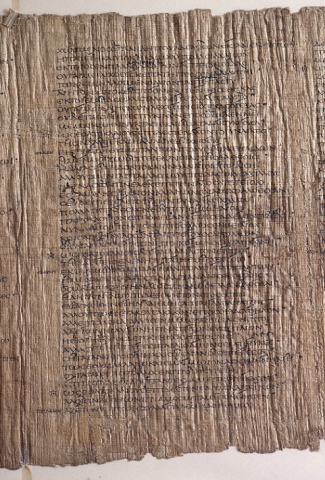
The Bankes Homer: a window into Homeric song
This thesis presents my analysis of the Bankes Homer papyrus with the intent to gain insights into aspects of Homeric performance. Over the past century, scholars have largely reconstructed the performance tradition of the Homeric epics, the Iliad and the Odyssey, their social context, meter and composition, and dissemination, yet the sound of Homeric song remains shrouded in mystery. What little we know has come largely from the study of the songs depicted in the poems themselves, from the descriptions of Homeric performances in other ancient authors, and through comparison with living traditions of oral composition. Another rare and underappreciated source of information, however, are the surviving, material texts of the Homeric poems themselves which scholars have hypothesized could provide us possibly with a more direct understanding of some elements of the performance practices of the Homeric epic performance traditions. An example of this sort of text, one that may contain clues to the history of Homeric epic performance, is the “Bankes Homer” (= P. Lond. Lit. 28). This papyrus, dating from the 2nd century CE, is among the best preserved and longest Homeric papyri, preserving approximately 677 verses from Book 24 of the Iliad (lines 127-804). One of its unique features, besides its length, is the markings that are present above nearly every line of text. These contain diacritical markings (accents, breathings, and diaereses), markings of quantity, punctuation, and various scholia, which serve to organize the text. The research presented in this thesis, based on the systematic examination of these markings, argues that they reflect features of the performance of Book 24 of the Iliad. Through a process called melodization, I use the ancient markings in the Bankes Homer papyrus to attempt a reconstruction of the melody of the lines that could have been sung by the performer/singer of the epic. In particular, I focused on the laments for Hector in lines 719-745 and considered how the content of the lines could affect how the melody sounds. Throughout my whole analysis, I have found that the Bankes Homer papyrus appears to be a unique document that opens for us a remarkable window into Homeric song.
